In the beginning of February, I had the pleasure of visiting Vincent Pacheco’s studio right before the Masters of Fine Arts 2nd year students had their faculty review. I was surprised to encounter a site-specific installation that took over his whole studio, instead of the expected desk, artwork, tools, books, and scattered reference photos and materials usual to an art practice space. Vincent Pacheco was soft spoken and chill, although the whole Annex [UC Davis graduate studios building] was hectic and busy with students, some museum staff visitors, and faculty. Vincent’s insight into his practice was extremely compelling and relevant to the recent “back to nature” idealism of millennials. Vincent and I sat down on the ground of his installation by his faux fire pit and had the following conversation:
AL: Can you talk a little about where you come from?
VP: I am from the suburbs. My family is from the Mission District in San Francisco, we had a long history of selling drugs, dealing drugs. My father was part of the drug trade growing up, and once he started having kids he decided to take his family out of the Mission District. So me and my brothers are from the suburbs, we had the chance to live a good life. I was fortunate enough to come to UC Davis as an undergrad, I graduated here in 2003 from the design department.
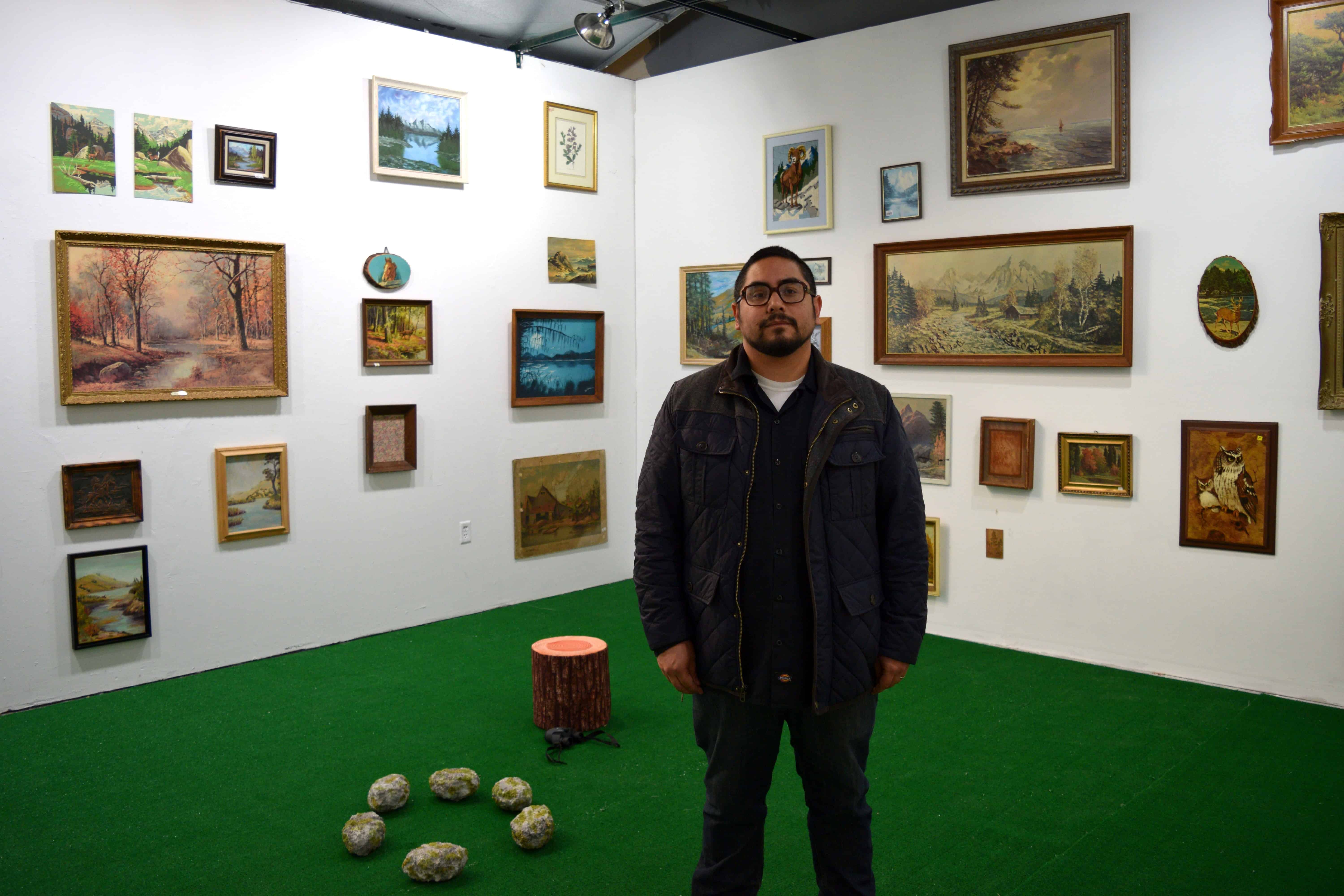
AL: How would you describe the content of your current work?
VP: It is a long story. I lived in a lot of big cities, Los Angeles, Seattle, etc. I felt this urge to connect with nature. Recently about three years ago I bought a cabin in the woods. I live in the Sierra Nevada Mountains, in California. I wanted to reconnect with nature and spiritualism again, or maybe for the first time. So that’s what I did, and I have been using this art practice here at school [UC Davis MFA Program] to process what it means to be in that environment, to process my new surroundings, and to try to figure it out because it is a new way of life for me. I was not raised in nature, it was not part of my family’s background. I am using the studio as a way to process what it is that I am experiencing out there in the woods. This installation is one of many I am doing this year questioning my motivations for wanting to buy a cabin in the woods.
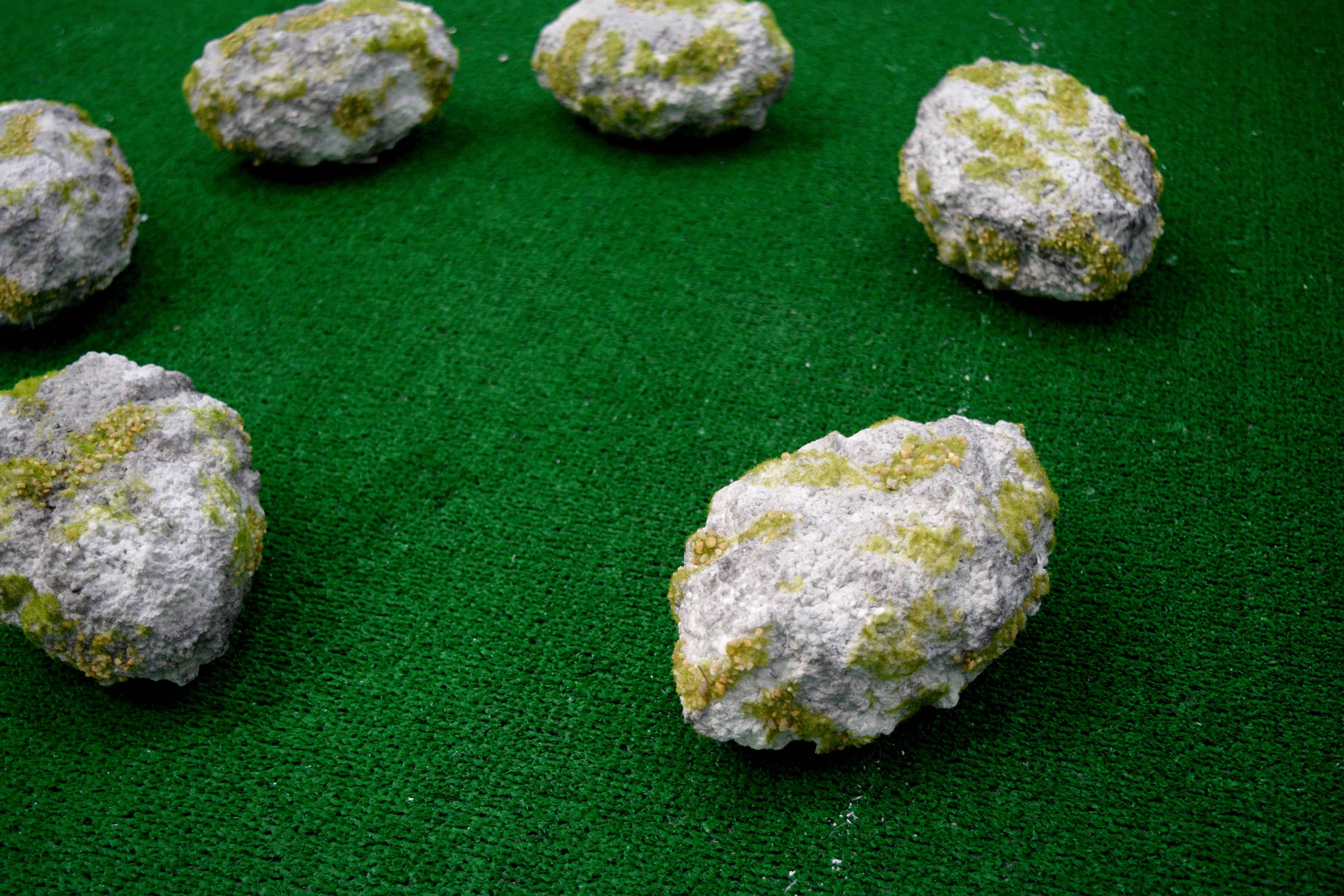
AL: Did you move there with your family, is that where you currently live?
VP: I currently live there. I bought it with my wife in 2012, we are surrounded by thousands of acres of the Tahoe National Forest. It is a little crazy, I am under six feet of snow right now and and then I come down here it’s a transition into sunshine. It is an hour and a half drive that I do every day. I start in the forest and then I move to Gold Country and come down onto the valley with its strip malls.
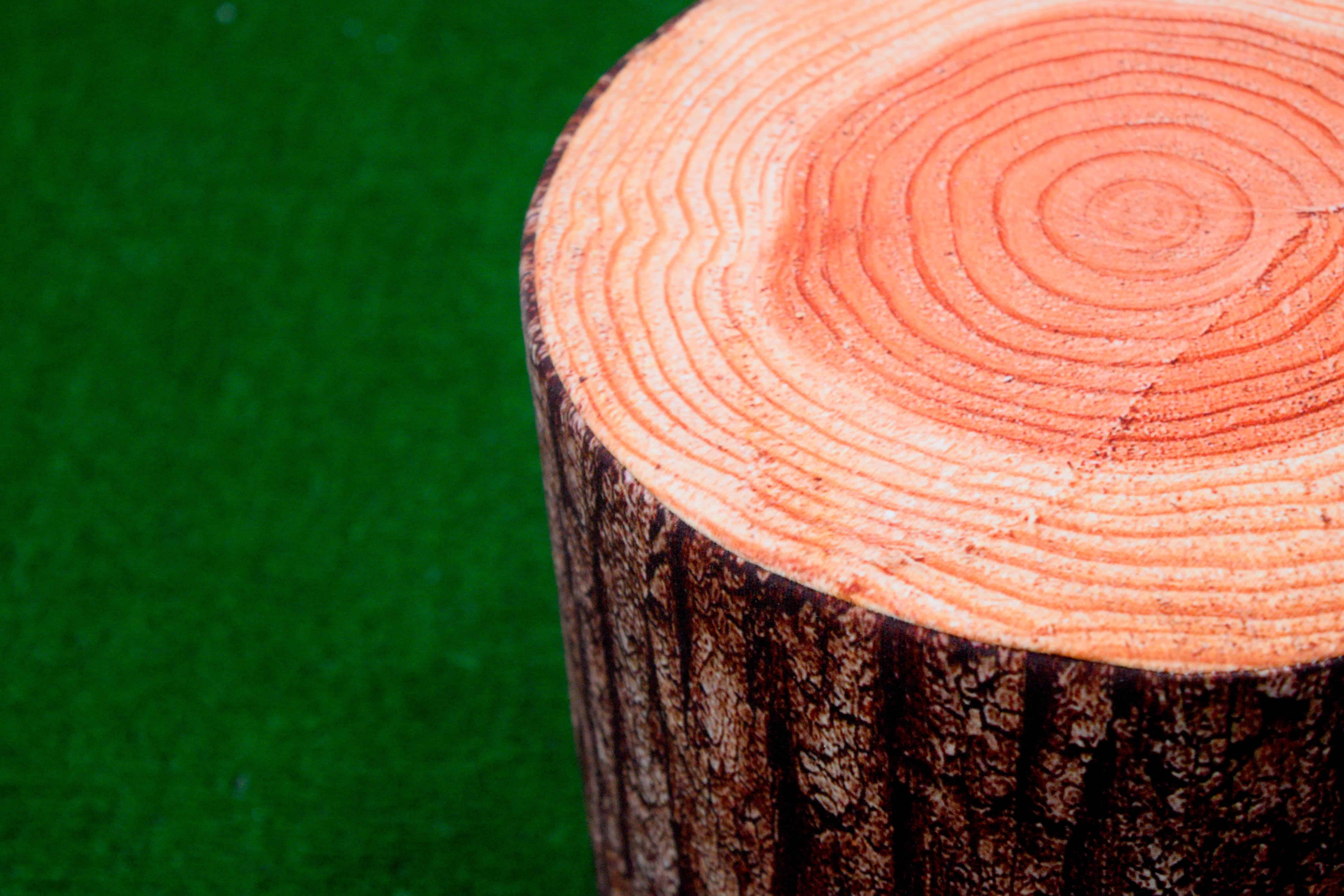
AL: Does commuting every day from the mountains through different landscapes affect you conceptually?
VP: I live in a fabricated experience, I realize. I partly created this experience. It is surreal, this new landscape I am part of comes out in the work, there is just no way around it. My practice has always been like that, whatever is in front of me is in the work. But to come here in this white cube to try to process a place that I drove an hour and a half away from through the strip malls, and to try to connect with that memory of where I was and where I have been, it is artificial. That is what has been driving my work recently. The fact that it is ridiculous to process a place when I am not in that place.
AL: I think it relates to the human experience.
VP: Yeah, it took me a year to realize that. You know, I deal with faculty pushing me to process this new place I found myself in, but I am not there so how can I do it? That is interesting to me.
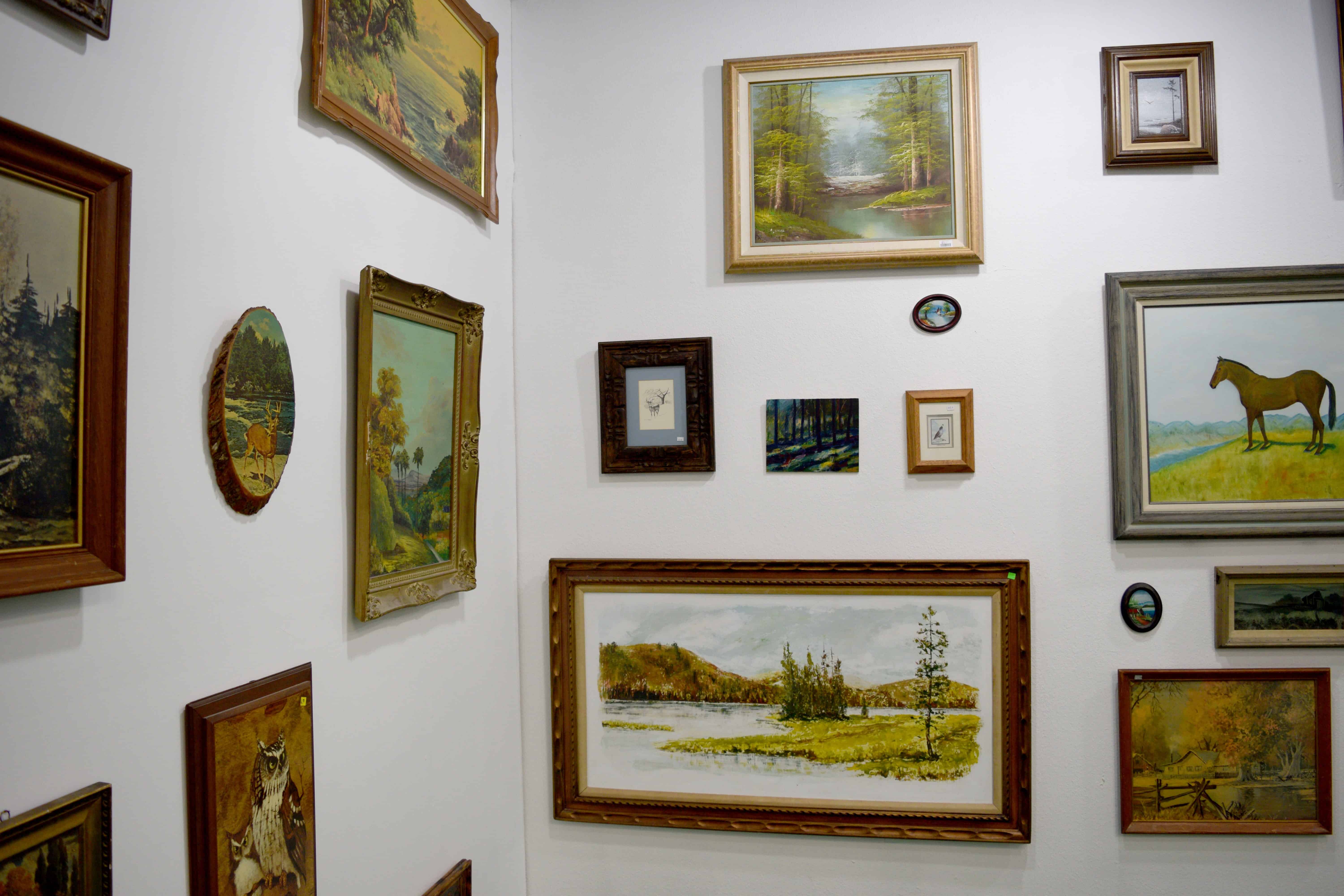
AL: You obviously have a lot of art from thrift stores in this installation, do you feel like there is an element of nostalgia in it? what attracted you to landscapes that someone else made that were discarded?
VP: I have been thinking about this archetype of nature that we all have. What I am doing is buying up the collective experience of the collective projection of what nature is. I am particularly interested in that because of the question, “What was the motivation of moving to the forest in the middle of nowhere?” It was probably influenced by a collective response to nature. These images are pervasive in all of us. We all have these ideas and representations of nature in the back of our mind, and it is sad that it looks nothing like this when you go out there, and I thought it would be. I thought I was going to find oneness in that landscape but I haven’t. I see more trash than I do here, I see remnants of industry, old mines, artifacts scattered throughout the forest, man-made objects. It is heartbreaking to see. I’m wrestling with this idea or vision of what I thought it would be and the reality of the situation I found myself in. This is part of why I started gravitating towards these artificial representations of what that life could be.
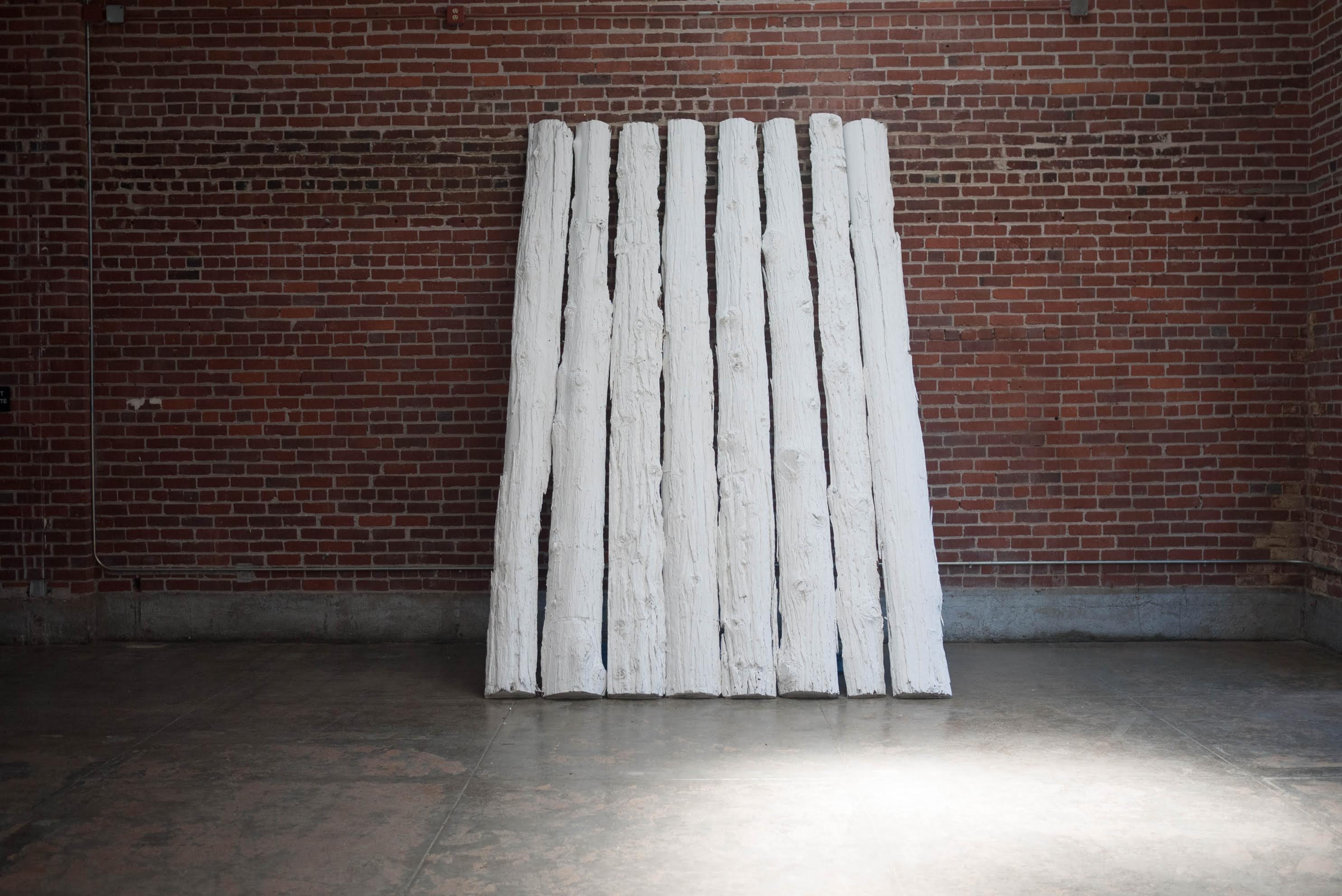
AL: When I saw your show at Beatnik Studios last year, I saw some work related to performance, can you talk about that series in terms of media?
VP: My media changes depending on where I am at. The guiding question of my work is “How does an understanding of place inform the mode of self?” And it takes everything I know to try to answer that question, whether it is collage or performance or sculpture or installation.
The Shelter project was what I did last year, and I was really struggling with the pool of being physically removed from my home, coming here, trying to process that life. So I started building shelters in the forest with materials found in that specific area, and forcing myself to sleep overnight on the forest floor, to somehow reconnect with something that was slipping away by being forced to be on this commute every day. If I could sleep overnight on the forest floor, what would that teach me? Would I find a spiritual connection to the landscape?
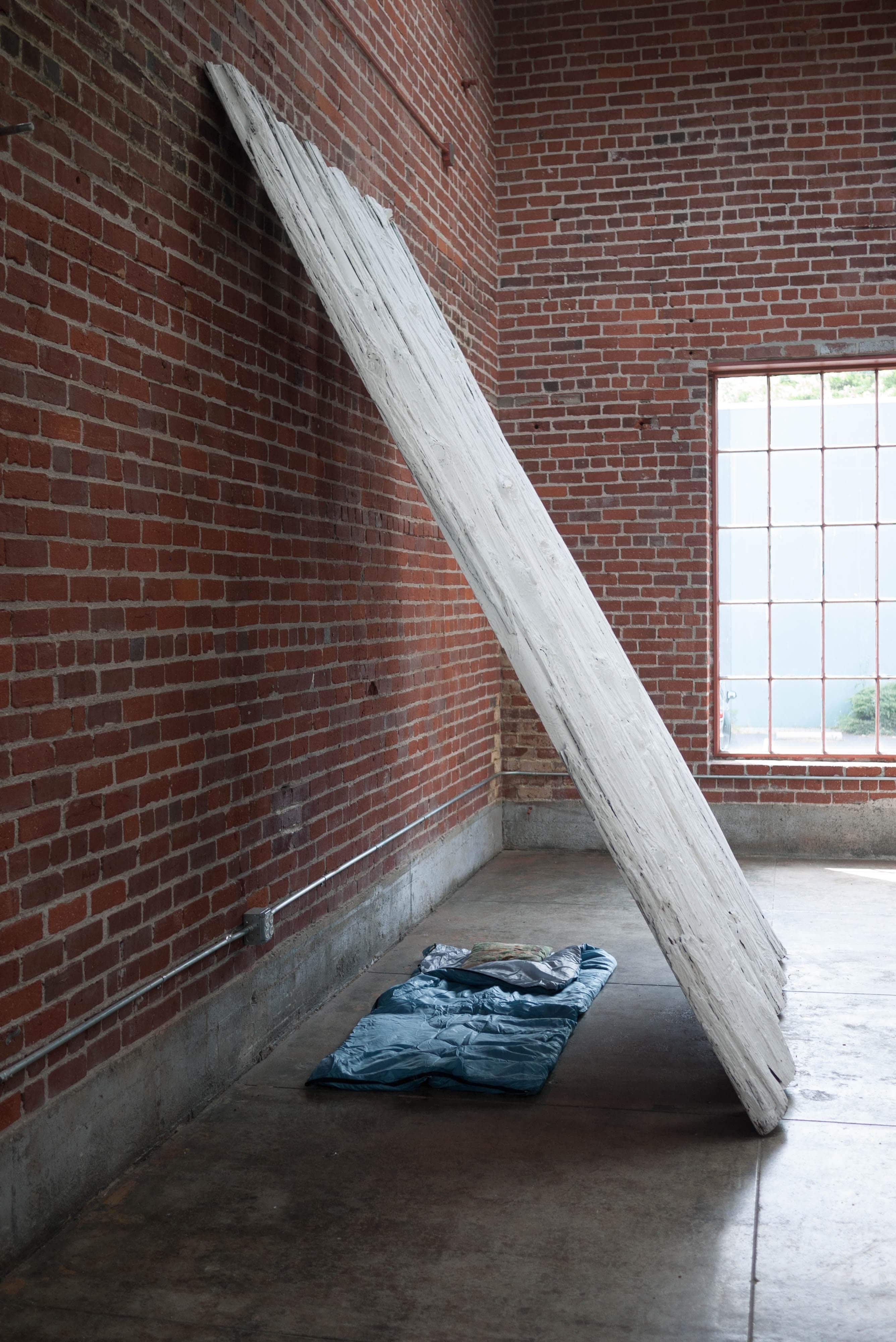
AL: [On a previous email] You said that you also stayed the night at Beatnik Studios gallery and that that was the worst night of your life. Could you talk about why and how that compared to staying in the forest?
VP: Every night that I stayed at every shelter was the worse night of my life. I stayed in my first shelter and I got bit by a tick, and I got Lyme disease from that. I thought it was going to be this beautiful moment where I was going to transcend, but it wasn’t like that. I got attacked. The whole night I was scared because I could hear footsteps in the forest, it was frightening. The Beatnik show was challenging because how do you take a spiritual kind of experience and translate it into the galley? The shelters were a tool for learning and a tool for development, how do I put a price tag on it? That was more challenging but the worse part was trying to fall asleep in that space. I was sleeping on a cement floor, it was cold, and at three am I had just gone to sleep and the janitor came in, the lights went on, and I did not know what to do. It was just like being in out the wild. If you hear a bear, what do you do? Do you make a loud noise to announce your presence? Do you stay perfectly quiet and try to hide? If I made a loud noise I could get hit with a broomstick, the police would get called, it is the same thing. It was a great learning experience, because there was no separation between the natural and the artificial.
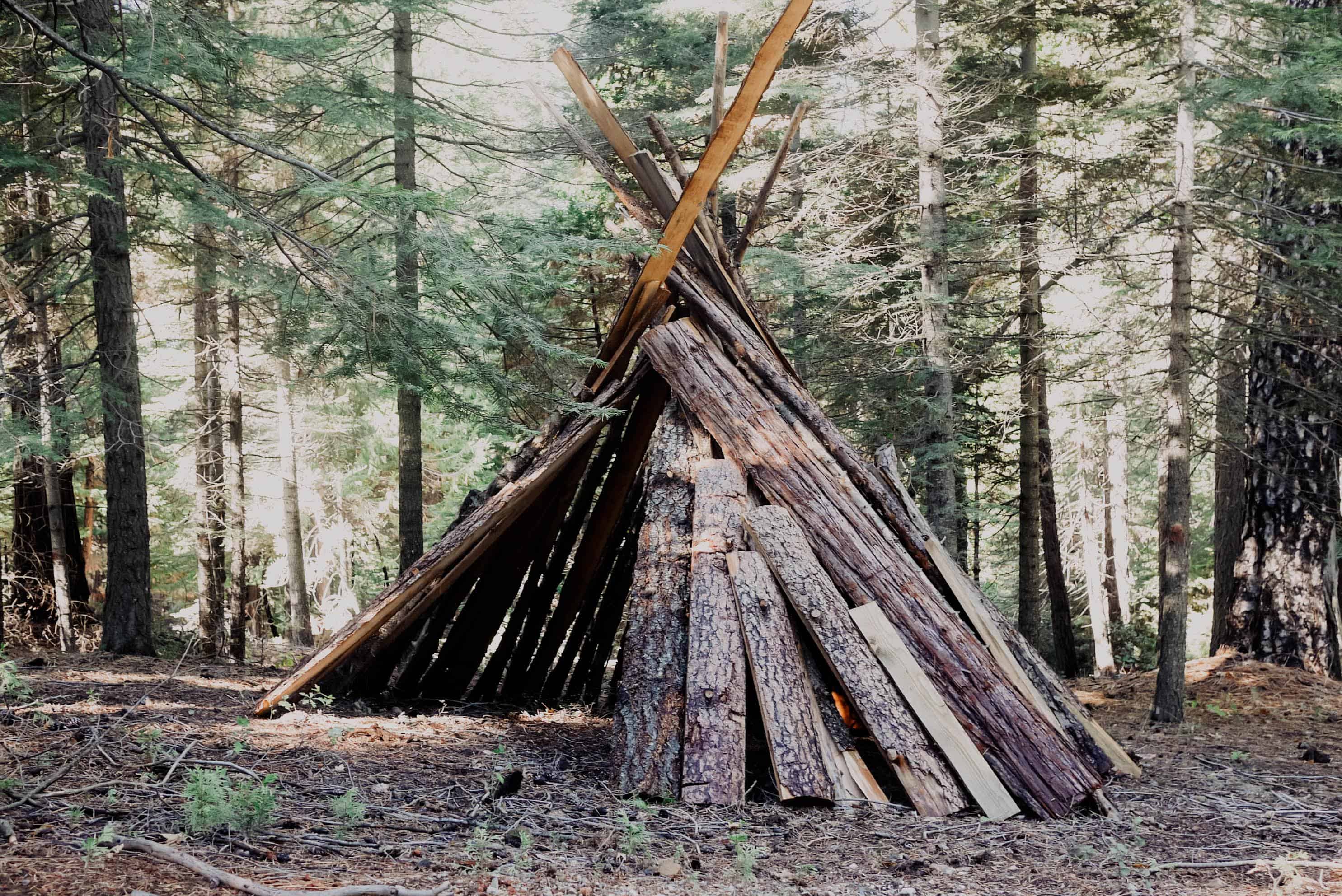
AL: Do you think that your work connects to a sense of dystopia in those transitions between the natural and artificial?
VP: I thought I was going to find utopia. It is interesting that my friends and the people of my generation have this desire to go back to the land, to grow our own food, to be sustainable, and to quit our jobs. Most of my friends have done that including me. I was a designer for fifteen years for corporate america, I was making a lot of money, but I was not growing spiritually at all. I had to quit and face myself, and I thought the answers were going to be in nature, but they are not. I realize a place, is a place, is a place. No matter where I am at I have to face myself, I am not going to find the answers in a location. It has been a hard fact to face.
AL: Has it helped at all to live out there? Are there good parts about living in the forest?
VP: Well it is beautiful and I do see bears and deers, and when I am out there I can feel the energy of the forest, as strange as that sounds, I can tap into it. There is a wavelength. I am noticing migration patterns, and I am calming down a lot. I think the biggest thing that I have learned from it, I guess being tragically disappointed from this location, because it is not utopia is that I can’t run from myself. I have been moving around up and down the west coast trying to find something, and I got there, to my final spot and it is not, I don’t know, it is not as monumental of an experience as I thought it would be. But it is all up to me to figure out my shit. It is up to me, I can’t depend on a place, or situation, or variables to come together. At the end of the day I have to do my own work.
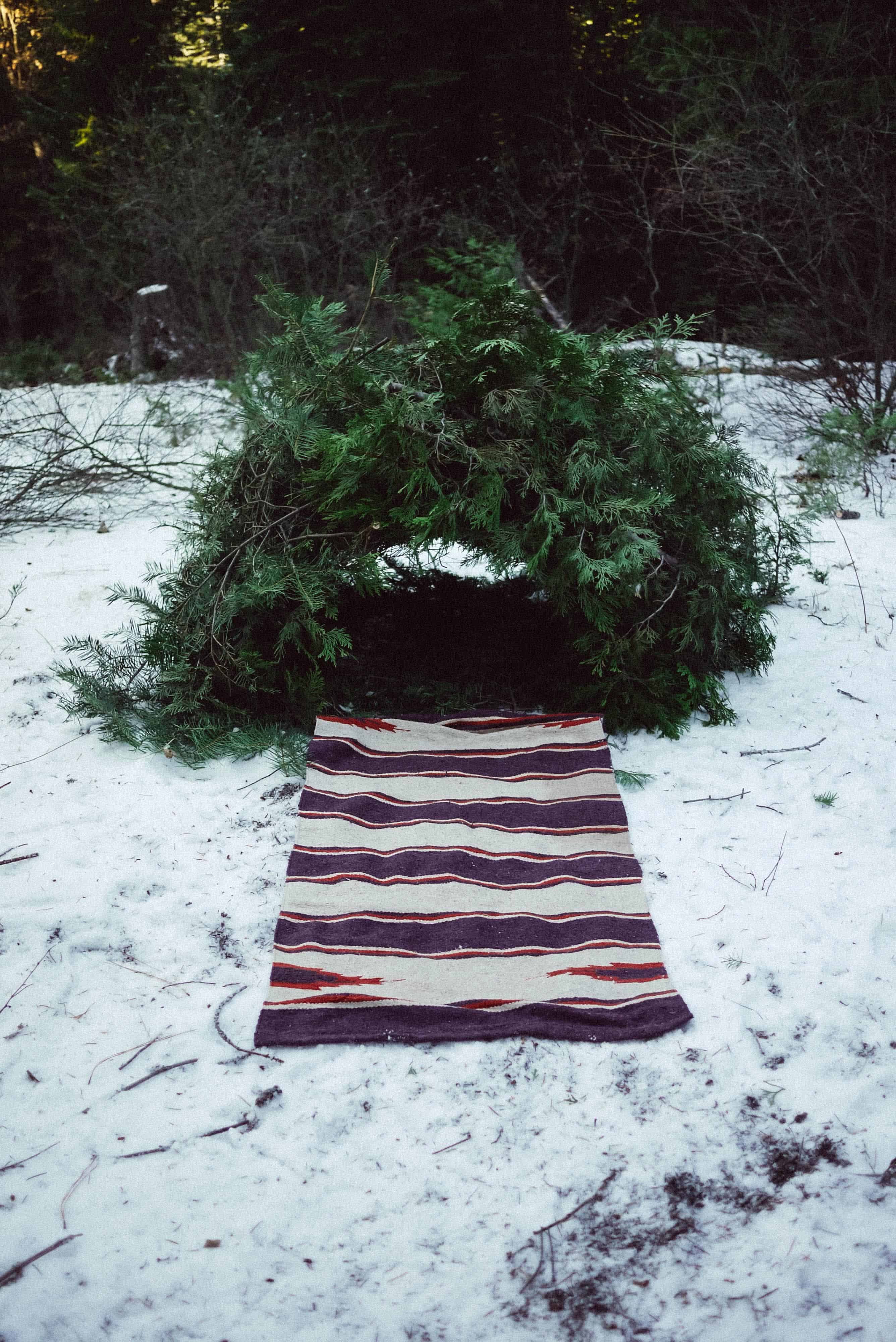
AL: Speaking of your work, I have a loaded question about it in different terms. How do you navigate the art world?
VP: It is a battle. I have been in a lot of shows, and I have been published in books and stuff. I did commercial art for fifteen years, I know how to make money doing art. I don’t find any joy in the process or motivation at all. I just don’t learn anything from it. I am not here in this program to have big shows someday. That does not interest me, because the end result is money and fame, and I know how to make money. I can go back to graphic design to make money. My artwork is going to be at home, at the studio, where I do my work. Maybe I’ll do residencies, maybe I’ll teach but as far as making a career out of this, it does not interest me because I don’t believe in careers anymore. But it is strange being here because they push us to find what our place in the art world is, and where we are going to take this.
AL: Do you think it is because the college’s branding?
VP: Yes because you have to be a success right? Because then I become part of their portfolio. I don’t know if it happens it happens, I just haven’t found joy in the hustling.
AL: Is there anything else you would like to say about this installation?
VP: This is an experience [pointing to his installation]. I brought my binoculars. I want to see if it is possible to experience the sublime here. If I can make it happen here I can make it happen anywhere. If the experience of transcendence can happen in this artificial environment, that is a spiritual test.
AL: Is there a process you take to try to experience this?
VP: It all comes down to stillness, being still in the environment, taking a moment, quieting the mind down. When I work at the studio there are like thirty people outside hustling in and out. Now that this is up, I am going to sit and see what happens. Will this teach me anything about myself? The landscape I live in? Our collective experience? These are the questions I’ll be looking for.
Find out more:
Vincent’s Website: http://www.vincentpacheco.com/
